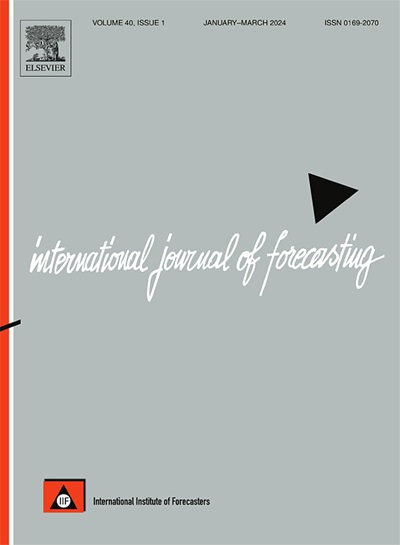M6竞争对手的基准:财务指标的分析和激励的讨论
IF 7.1
2区 经济学
Q1 ECONOMICS
引用次数: 0
摘要
M6竞赛使用排序概率得分和信息比率来评估竞争者的表现。虽然这些指标能很好地挑选出竞争中的赢家,但对于有长期动机的投资者来说,仍存在一些关键问题。为了解决这些问题,我们将竞争对手的表现与一些传统(只做多)和使用行业相关指标的替代指数进行了比较。我们运用因子模型来衡量竞争对手在行业标准基准之上的附加价值,发现表现越极端的竞争对手对基准的依赖程度越低。我们进一步介绍了两种新的策略,通过挑选最近表现最好(超级明星)和最差(超级失败者)的竞争对手,并表明在投资经理中识别技能是具有挑战性的。最后,我们讨论了与专业投资者相比,赢得竞争的动机,投资者希望在较长一段时间内最大化费用,并为未来的竞争改进提供建议。本文章由计算机程序翻译,如有差异,请以英文原文为准。
Benchmarking M6 competitors: An analysis of financial metrics and discussion of incentives
The M6 Competition assessed the performance of competitors using a ranked probability score and an information ratio. While these metrics do well at picking the winners in the competition, crucial questions remain for investors with longer-term incentives. To address these questions, we compare the competitors’ performance with a number of conventional (long-only) and alternative indices using industry-relevant metrics. We apply factor models to measure the competitors’ value-adds above industry-standard benchmarks and find that competitors with more extreme performance are less dependent on the benchmarks. We further introduce two new strategies by picking the competitors with the best (Superstars) and worst (Superlosers) recent performance and show that it is challenging to identify skill amongst investment managers. Finally, we discuss the incentives of winning the competition compared with professional investors, where investors wish to maximize fees over an extended period of time, and provide suggestions for future competition improvements.
求助全文
通过发布文献求助,成功后即可免费获取论文全文。
去求助
来源期刊

International Journal of Forecasting
Multiple-
CiteScore
17.10
自引率
11.40%
发文量
189
审稿时长
77 days
期刊介绍:
The International Journal of Forecasting is a leading journal in its field that publishes high quality refereed papers. It aims to bridge the gap between theory and practice, making forecasting useful and relevant for decision and policy makers. The journal places strong emphasis on empirical studies, evaluation activities, implementation research, and improving the practice of forecasting. It welcomes various points of view and encourages debate to find solutions to field-related problems. The journal is the official publication of the International Institute of Forecasters (IIF) and is indexed in Sociological Abstracts, Journal of Economic Literature, Statistical Theory and Method Abstracts, INSPEC, Current Contents, UMI Data Courier, RePEc, Academic Journal Guide, CIS, IAOR, and Social Sciences Citation Index.
 求助内容:
求助内容: 应助结果提醒方式:
应助结果提醒方式:


